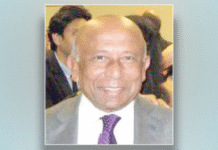What are we waiting for?

According to experts, should we see any significant surge in Covid-19—or anything close to the situation in India—our healthcare sector will not be able to cope with it. Despite more than a year having passed since the pandemic began, why is our healthcare sector still not in a position to manage any large-scale spread of Covid-19? When thousands of people in the country have been infected and/or died from the disease, shouldn’t the government have prioritised preparing the healthcare sector to handle a bigger crisis much better by now?
When our larger next-door neighbour is collapsing from their Covid-19 crisis, there is no reason for us to sit back, relax and hope we are going to get lucky and escape any further surge in cases. That type of attitude—of hoping for a miracle—is suicidal at this point, particularly given how likely another rise in cases is after the Eid rush and since the Indian variant of the virus has been detected in several areas. Already, on May 19, the number of newly infected increased to 1,608 from 261 on May 15. Given that the number of people being tested has kept on declining throughout the last months, it is quite possible that the actual number of infected is much higher, and so is currently being underreported. But still, the government has failed to equip most of the upazila health complexes with the necessary human resources and life-saving equipment like high-flow oxygen supply, crucial to treating critical Covid-19 patients.
 For all latest news, follow The Daily Star’s Google News channel.
For all latest news, follow The Daily Star’s Google News channel.
Many district-level hospitals are yet to get a central oxygen supply system. And the antigen-based testing has still not gotten much traction. Although the number of beds available for Covid-19 patients in the country has increased over the last one year, it is still nearly not enough to handle any larger outbreak which we are seeing in India and Nepal. Moreover, health officials said that a total of 134 district-level hospitals would be equipped with a central oxygen supply system by June this year. However, by the end of April, the installation of the central oxygen supply system was completed in only 73 hospitals—work on the central oxygen supply system in 61 hospitals is still incomplete. And to add to that, our domestic oxygen production capacity is barely covering the current oxygen demand, which means that any increase in demand cannot be satisfied with our current capacity.
All of these have to be addressed by the government on an urgent basis. Unfortunately, the performance of the health ministry—and officials—throughout this pandemic period has not given us much assurance that they are capable of doing this. Therefore, the government must give special attention to rectify this. If necessary, the government should set up a special monitoring and implementation commission comprising experts to do the job that the health ministry has so far failed to do. But whatever it is that the government decides, ultimately, it must ensure that the healthcare sector is prepared in the event of a huge outbreak of Covid-19 cases.









